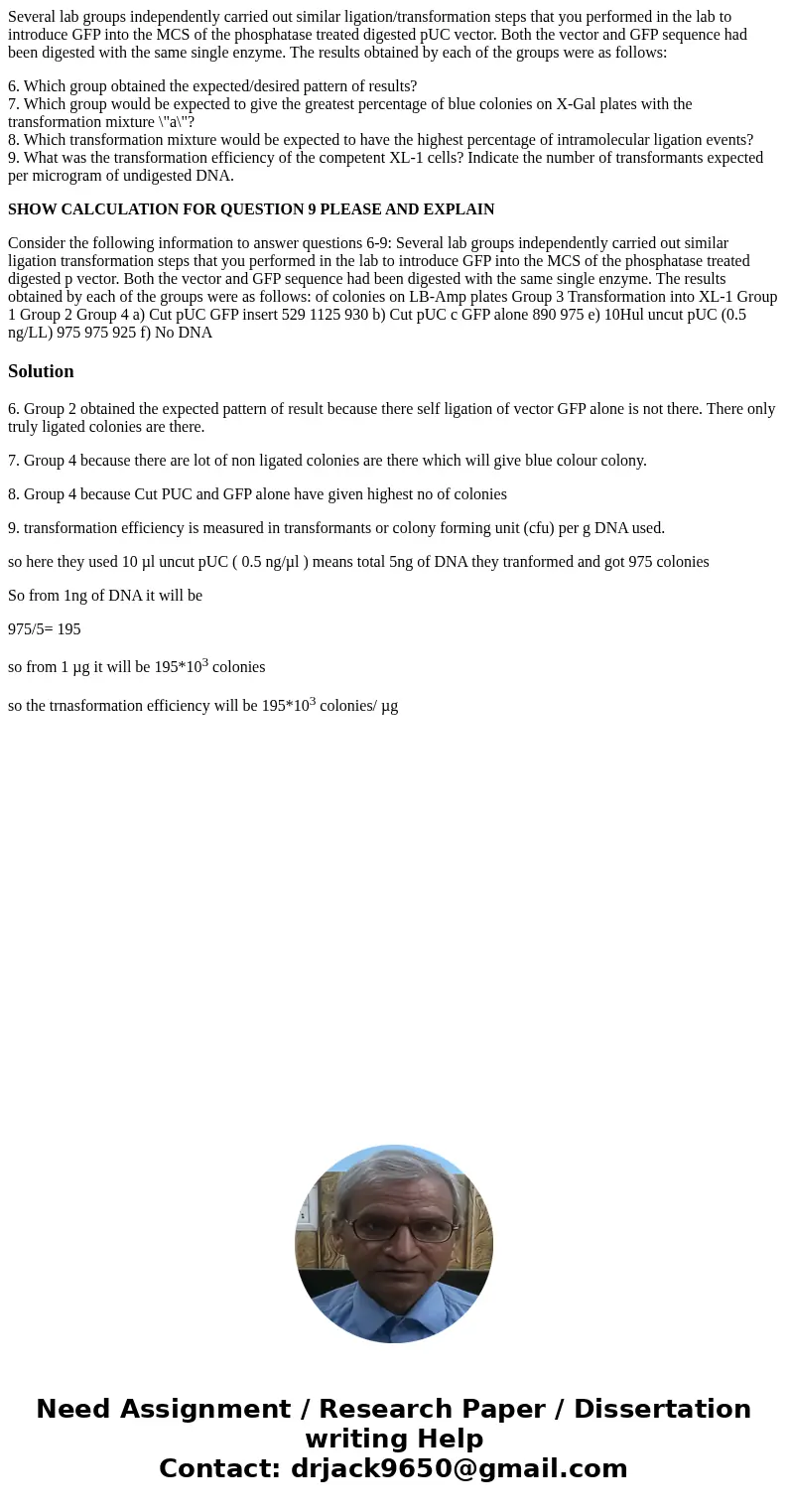Several lab groups independently carried out similar ligatio
Several lab groups independently carried out similar ligation/transformation steps that you performed in the lab to introduce GFP into the MCS of the phosphatase treated digested pUC vector. Both the vector and GFP sequence had been digested with the same single enzyme. The results obtained by each of the groups were as follows:
6. Which group obtained the expected/desired pattern of results?
7. Which group would be expected to give the greatest percentage of blue colonies on X-Gal plates with the transformation mixture \"a\"?
8. Which transformation mixture would be expected to have the highest percentage of intramolecular ligation events?
9. What was the transformation efficiency of the competent XL-1 cells? Indicate the number of transformants expected per microgram of undigested DNA.
SHOW CALCULATION FOR QUESTION 9 PLEASE AND EXPLAIN
Consider the following information to answer questions 6-9: Several lab groups independently carried out similar ligation transformation steps that you performed in the lab to introduce GFP into the MCS of the phosphatase treated digested p vector. Both the vector and GFP sequence had been digested with the same single enzyme. The results obtained by each of the groups were as follows: of colonies on LB-Amp plates Group 3 Transformation into XL-1 Group 1 Group 2 Group 4 a) Cut pUC GFP insert 529 1125 930 b) Cut pUC c GFP alone 890 975 e) 10Hul uncut pUC (0.5 ng/LL) 975 975 925 f) No DNASolution
6. Group 2 obtained the expected pattern of result because there self ligation of vector GFP alone is not there. There only truly ligated colonies are there.
7. Group 4 because there are lot of non ligated colonies are there which will give blue colour colony.
8. Group 4 because Cut PUC and GFP alone have given highest no of colonies
9. transformation efficiency is measured in transformants or colony forming unit (cfu) per g DNA used.
so here they used 10 µl uncut pUC ( 0.5 ng/µl ) means total 5ng of DNA they tranformed and got 975 colonies
So from 1ng of DNA it will be
975/5= 195
so from 1 µg it will be 195*103 colonies
so the trnasformation efficiency will be 195*103 colonies/ µg

 Homework Sourse
Homework Sourse